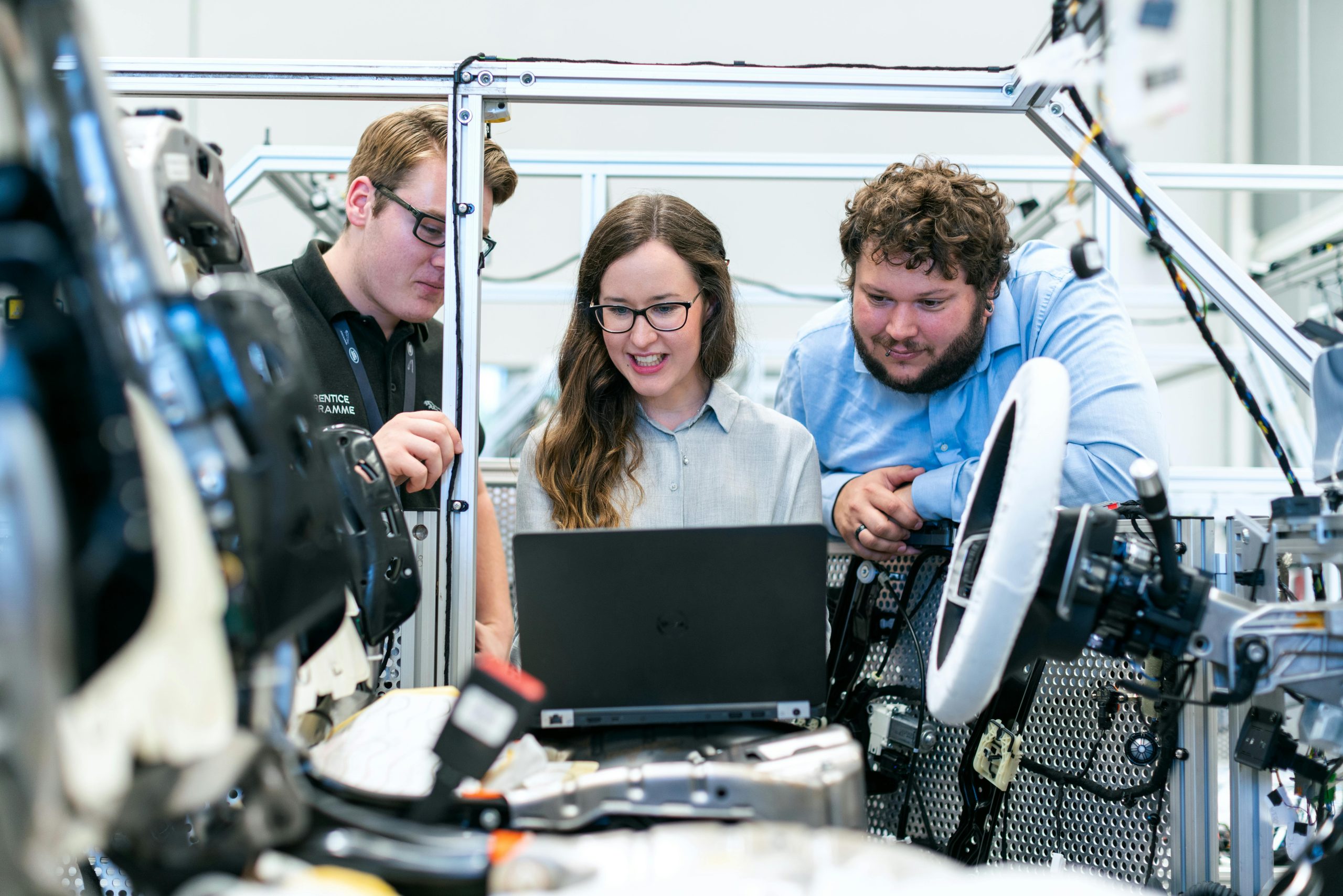The manufacturing industry is undergoing a transformative shift as human-robot collaboration (HRC) becomes a cornerstone of modern production lines. Gone are the days when robots worked in isolation behind safety cages. Today, collaborative robots (cobots) work side by side with human operators, enhancing productivity, precision, and safety. This synergy between humans and machines is not just a trend—it’s the future of manufacturing, driving efficiency and innovation like never before.
The Rise of Collaborative Robots in Manufacturing
Collaborative robots, or cobots, are designed to interact directly with humans in shared workspaces. Unlike traditional industrial robots, cobots are equipped with advanced sensors and AI-driven software that allow them to operate safely alongside human workers. This shift has been fueled by several factors:
- Cost-Effectiveness: Cobots are more affordable than traditional robots, making automation accessible to small and mid-sized manufacturers.
- Flexibility: They can be easily reprogrammed for different tasks, reducing downtime and increasing adaptability.
- Safety: With built-in force-limiting technology, cobots can detect and avoid collisions, minimizing workplace injuries.
Industries ranging from automotive to electronics are leveraging cobots to streamline operations, reduce errors, and boost output. As technology advances, the role of cobots will only expand, further blurring the lines between human and machine labor.
Key Benefits of Human-Robot Collaboration
The integration of humans and robots in manufacturing offers a multitude of advantages that go beyond simple automation. Here are some of the most impactful benefits:
Enhanced Productivity
By handling repetitive or physically demanding tasks, cobots free up human workers to focus on complex, value-added activities. This division of labor leads to faster production cycles and higher overall efficiency.
Improved Precision and Quality
Robots excel at tasks requiring high precision, such as welding, assembly, or quality inspection. When combined with human oversight, the result is a significant reduction in defects and waste.
Workplace Safety
Dangerous tasks, such as lifting heavy objects or working with hazardous materials, can be delegated to cobots. This reduces the risk of workplace injuries and creates a safer environment for employees.
Scalability
Cobots can be quickly reprogrammed or redeployed to meet changing production demands, allowing manufacturers to scale operations without major infrastructure changes.
Challenges and Solutions in Human-Robot Collaboration
While the benefits are clear, implementing HRC is not without its challenges. Manufacturers must address several hurdles to maximize the potential of this technology:
Integration with Existing Systems
Many factories rely on legacy equipment that may not be compatible with modern cobots. Solutions include:
- Investing in middleware to bridge communication gaps between old and new systems.
- Gradual phased integration to minimize disruption.
Workforce Training
Employees need to be trained to work alongside cobots, which requires time and resources. Manufacturers can overcome this by:
- Offering hands-on training programs to build confidence and competence.
- Partnering with cobot manufacturers for specialized support.
Cost of Implementation
While cobots are more affordable than traditional robots, initial costs can still be a barrier. Strategies to mitigate this include:
- Starting with pilot projects to demonstrate ROI before full-scale deployment.
- Exploring leasing or financing options to spread out costs.
The Future of Human-Robot Collaboration
The future of HRC in manufacturing is bright, with several emerging trends set to redefine the industry:
AI and Machine Learning
Advanced AI will enable cobots to learn from human workers, improving their ability to predict needs and adapt to dynamic environments. This will further enhance efficiency and reduce the need for manual reprogramming.
5G and IoT Connectivity
The rollout of 5G networks and IoT devices will allow cobots to communicate in real-time with other machines and systems, enabling seamless coordination across the entire production floor.
Customizable Cobots
Future cobots will be more modular, allowing manufacturers to customize them for specific tasks. This flexibility will make HRC even more accessible and versatile.
Human-Centric Design
As cobots become more intuitive, their interfaces will prioritize ease of use, ensuring that workers of all skill levels can interact with them effortlessly.
Conclusion
Human-robot collaboration is revolutionizing the manufacturing industry, offering unparalleled efficiency, safety, and scalability. While challenges remain, the benefits far outweigh the obstacles, making HRC a cornerstone of Industry 4.0. As technology continues to evolve, the partnership between humans and robots will only grow stronger, paving the way for a smarter, more productive future in manufacturing. Embracing this change today will ensure that businesses remain competitive in the rapidly evolving industrial landscape.
